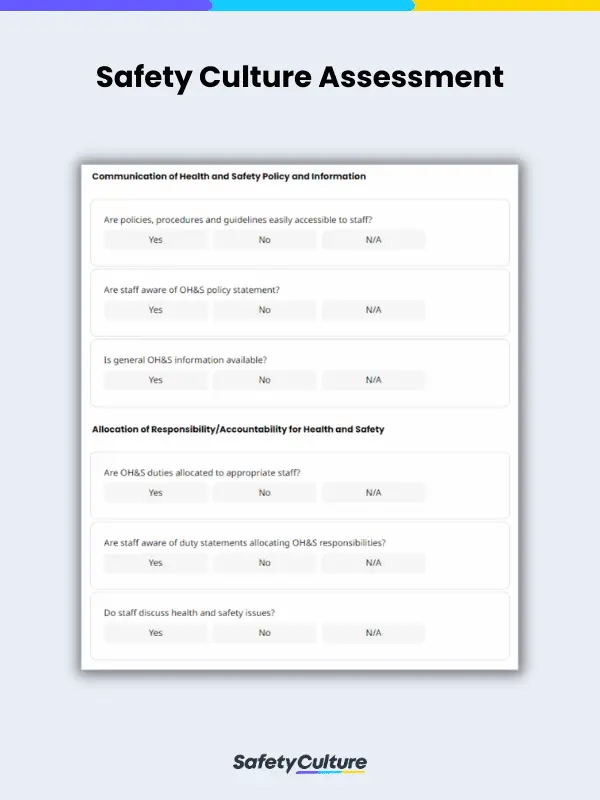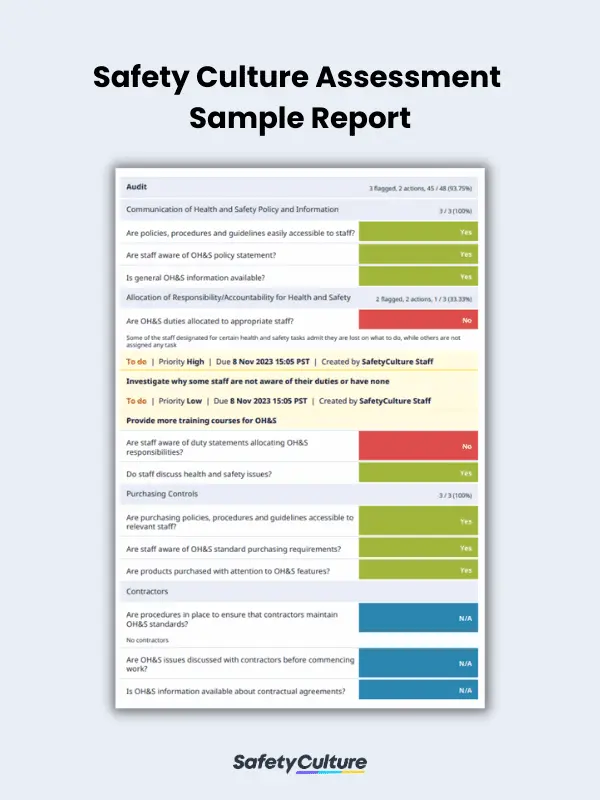What is a Safety Culture Assessment?
A safety culture assessment is an organized and systematic approach to evaluating an organization’s culture of safety in the workplace. It aims to ensure that a workplace has the right safety regulations, identify safety risks, and make the necessary adjustments to keep both facilities and workers protected.
Importance
Safety culture can be defined as a culture that prioritizes employee safety above all else. Not only does a safety culture pertain to safety procedures in place, but it also includes having safety-centered beliefs, conducting regular conversations on safety, and encouraging employees to have a positive attitude towards safety.
Safety in the workplace is not merely about adhering to regulations and rules; it is a fundamental aspect of an organization’s culture. A strong safety culture can prevent accidents, reduce injuries, and boost employee morale, ultimately leading to higher productivity and lower operational costs.
To measure safety culture and all the efforts that go into it, an assessment is often done in the form of a survey, questionnaire, checklist, or observational report. With a safety culture assessment, you can inspect if your organization and workplace are ensuring a culture of safety as intended and if there are any points of improvement.
What to Include in a Safety Culture Assessment Form
Different organizations and types of workplaces will have different safety cultures. However, they all typically assess the same things, including but not limited to the following:
- Policies in place
- Duties of specific workers to ensure workplace safety
- Health policies
- Risk management and control
Thus, a typical safety culture assessment form contains fields for assessing the following:
- Status of policies in place
- Communication procedures for policies, rules, and regulations
- Allocation of responsibilities to the right personnel
- Purchasing requirements and controls
- Contractors’ status and relationships
- Health and safety in the workplace
- Risk management procedures
- Processes for:
- Manual tasks
- Hazardous substances and their handling
- Plants
- Equipment
- Workplace environment and stress management
- Training practices
- Accident and injury reporting and investigation
- Emergency planning and procedures
Here is a sample safety culture assessment form in use:
FAQs about Safety Culture Assessments
All safety culture assessments and related forms should be done by employers, internal safety officers, HR heads, or other accredited personnel who are most familiar with the workplace’s safety, health, and risk management programs. However, it is also the responsibility of team managers and leaders to be familiar with these assessments and carry out their own for their staff.
“Safety culture” is a broad term pertaining to the general way an organization’s culture, values, actions, and beliefs prioritize safety. On the other hand, “safety climate” refers to an organization’s staff and how they perceive their safety practices or culture are managed.
Safety culture assessments are typically conducted with surveys, questionnaires, interviews, focus groups, and observation reports. You can choose to do them with digital solutions, which can make it easier to compile data, form reports, and analyze the safety of your workplace and employees.
With a digital solution, you can also work anytime and anywhere, collating data and assessing safety culture reports, documentation, and more. This can improve the time needed to assess workplaces, as well as organize data more efficiently.




